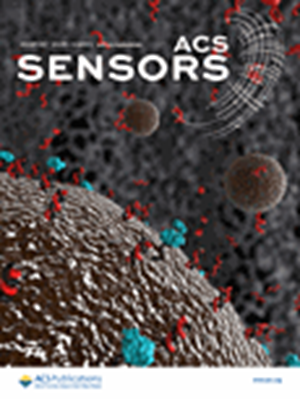Branch Enhanced Photoacoustic Sensor for Comprehensive Sevoflurane Monitoring
IF 8.2
1区 化学
Q1 CHEMISTRY, ANALYTICAL
引用次数: 0
Abstract
Comprehensive sevoflurane monitoring (CSM, sevoflurane concentrations from parts per billion to percent) is essential for the therapeutic diagnosis of anesthetized patients and occupational exposure monitoring. Photoacoustic spectroscopy, with its advantages of high sensitivity, wide dynamic range, miniaturization, and real-time, holds unique potential for CSM. A highly sensitive resonator with a small volume is an optimal choice regarding the limited exhaled gas amount. Wavelength modulation is not suitable for detecting trace sevoflurane with broad absorption lines because the modulation depth is far from optimal. Sensitive detection can be achieved using chopper-based amplitude modulation; therefore, a relatively low resonance frequency is critical. By the introduction of flexible polyurethane tubes, a branched photoacoustic cell (BPAC) was developed to compensate for the contradiction between the miniaturized resonator and the low resonance frequency requirement. The resonance frequency of BPAC was as low as 1036 Hz at a compact capacity of only 2.7 mL. Taking advantage of the replaceable and flexible branches, the geometry, resonance frequency, and sensitivity of BPAC could be optimized. The BPAC decoupling of the excitation and absorption paths, therefore, avoided the degradation of thermal-acoustic coupling at high concentrations. The sevoflurane detection results demonstrated that the Branch Enhanced Photoacoustic Spectroscopy (BEPAS) sensor yielded a 1σ limit of detection of 1.61 ppb with a 3 s integration time, corresponding to a normalized noise equivalent absorption coefficient of 2.2 × 10–9 cm–1 WHz–1/2. With only a 1 cm long absorption path and high thermal-acoustic coupling, the BEPAS sensor provided a wide dynamic range of 1.61 ppb to 8% (154 dB). Continuous on-site testing for CSM issues was performed, which demonstrated the stability and reliability of this sensor. The developed BEPAS may open new avenues for low resonance frequency, ultrasensitivity, wide dynamic range, and compact large-molecule gas detection.

求助全文
约1分钟内获得全文
求助全文
来源期刊

ACS Sensors
Chemical Engineering-Bioengineering
CiteScore
14.50
自引率
3.40%
发文量
372
期刊介绍:
ACS Sensors is a peer-reviewed research journal that focuses on the dissemination of new and original knowledge in the field of sensor science, particularly those that selectively sense chemical or biological species or processes. The journal covers a broad range of topics, including but not limited to biosensors, chemical sensors, gas sensors, intracellular sensors, single molecule sensors, cell chips, and microfluidic devices. It aims to publish articles that address conceptual advances in sensing technology applicable to various types of analytes or application papers that report on the use of existing sensing concepts in new ways or for new analytes.
 求助内容:
求助内容: 应助结果提醒方式:
应助结果提醒方式:


